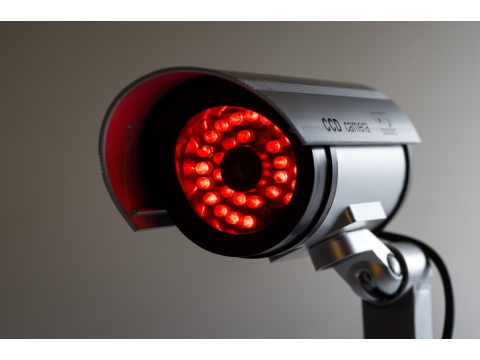Infrared Surveillance Cameras: Enhancing Nighttime Security
Infrared surveillance cameras are vital for monitoring in low-light or dark conditions. Their ability to capture images using infrared (IR) light ensures reliable security around the clock. This guide explores the technology behind IR cameras, their features, and tips for optimizing nighttime surveillance.
How Infrared Cameras Work
Infrared cameras capture images by detecting reflected IR light. Unlike thermal imaging devices, these cameras rely on external IR illumination rather than capturing an object's heat signature.
Key factors for effective infrared surveillance include:
- Camera Type: Monochrome (black-and-white) cameras typically perform better in low-light IR conditions compared to color cameras.
- Lens Quality: High-quality lenses with large apertures gather more IR light.
- Noise Reduction: Cameras with high signal-to-noise ratios (S/N > 50 dB) provide clearer images in low light.
Infrared Lighting for Surveillance Cameras
Why Use IR Lighting?
IR lighting enables surveillance in complete darkness without visible light. It’s ideal for:
- Covert operations requiring invisible lighting.
- Environments where visible light is impractical or disruptive, such as theaters or darkened warehouses.
Types of IR Lighting
Built-in IR Illumination:
Many cameras come with built-in IR LEDs for night vision. These are compact and cost-effective but have limitations in range and power.- Tip: Cameras with built-in IR are typically effective up to 20 meters. Beyond this range, standalone IR projectors are recommended.
External IR Projectors:
External projectors provide superior lighting for larger areas or extended ranges.
Choosing an IR Projector
Key Features:
- Power and Range:
- Higher power ensures greater range but often narrows the beam angle.
- Beam Angle:
- Match the projector’s angle with the camera’s field of view for optimal coverage.
- Wavelength:
- Most IR projectors operate in the 850 nm range, which is slightly visible as a faint red glow. For complete invisibility, choose projectors in the 940 nm range.
Example Setup:
- Camera Field of View: A 3.6 mm lens covers approximately 60°.
- Matching IR Projector: Use a projector with a 60° beam angle for uniform illumination.
Benefits of IR Surveillance Cameras
- 24/7 Security: Infrared cameras maintain visibility in complete darkness.
- Cost-Effectiveness: Using IR lighting avoids the expense of installing and maintaining visible lighting.
- Covert Monitoring: Invisible IR illumination keeps surveillance discreet.
Conclusion
Infrared surveillance cameras and IR lighting are indispensable for robust security systems, particularly in low-light conditions. Whether using built-in IR or standalone projectors, understanding how to match lighting to camera capabilities ensures effective nighttime surveillance.
Choose the right combination of cameras and IR lighting to maximize security and maintain peace of mind.

